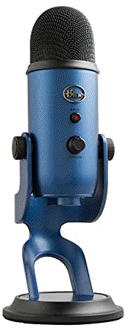Cierra Noffke
2025-05-03 07:00:00
www.cnet.com
Our growing reliance on the internet means we need a stable, high-speed internet connection to do almost everything, from working to gaming. Plus, if you’ve started collecting smart devices, you’ll need enough bandwidth to ensure everything in your home network is running smoothly. Thankfully, the latest Wi-Fi standards make connecting multiple devices easier for your router without compromising latency or congestion.
Wi-Fi 7 is the latest and fastest Wi-Fi standard, but plenty of Wi-Fi 6 and Wi-Fi 6E routers and devices still circulate the market. Whether you’re shopping for a new router or looking to future-proof your home, you’ll have to decide whether to invest in Wi-Fi 6 or 6E technology or wait for Wi-Fi 7 to become more affordable.
If you’re considering a Wi-Fi 6E router, you’ll be hard-pressed to find a more efficient router at a competitive price (that is, until Wi-Fi 7 starts getting cheaper). Here’s everything you should know about Wi-Fi 6E before you sign up, according to the experts.
What is Wi-Fi 6E? What makes it different from Wi-Fi 6?
Simply put, Wi-Fi 6E is an extension of Wi-Fi 6; that’s what the ’E’ stands for.
The Institute of Electrical and Electronics Engineers sets the standards for Wi-Fi technology with the goal of making Wi-Fi more efficient with every iteration. The Wi-Fi Alliance, a network of companies and manufacturers, certifies those standards. In 2020, the Wi-Fi Alliance announced Wi-Fi 6E, marking the group’s first extension of an existing Wi-Fi technology.
The only difference between Wi-Fi 6 and Wi-Fi 6E is that the extension offers an entirely new frequency band, the 6 gigahertz band. Previously, Wi-Fi only operated on the 2.4GHz and 5GHz bands, so when the Federal Communications Commission opened the 6GHz band for unlicensed use in 2020, it was kind of a big deal.
That 6GHz band is more than twice as wide as the 5GHz band: It allows for seven additional 160 megahertz channels, effectively doubling bandwidth and lowering congestion.
According to Luther Smith, technologist and director of Wireless Access Technology at CableLabs, the 6GHz band is like opening a wider road for traffic during rush hour.
“If you get on a two-lane road, your experience is very bad during rush hour,” said Smith. “You put that same amount of traffic on an eight-lane highway, you can move quickly, so your experience is better.”
When the Wi-Fi Alliance introduced Wi-Fi 6, the standard was a huge step up from Wi-Fi 5. CNET tested early Wi-Fi 6 routers to find speeds 40 to 60% faster than the fastest speeds we’d ever measured with Wi-Fi 5 routers. The improvement is due to technologies like orthogonal frequency-division multiple access, or OFDMA, which allows for various users and devices to send data at once on the same frequency bands, and quadrature amplitude modulation, or QAM, which translates data over Wi-Fi.
“Anytime you either make broader channels or increase your QAM, you’re inherently increasing the speed,” said Smith.
Wi-Fi 6E includes those technologies and extends them to a third band, a feat that reduces channel congestion among the devices on your network and improves congestion among neighboring networks using the same channel spectrums.
“When you have a very large band, you can have multiple channels,” said Lili Hervieu, a principal architect of Wireless Access Technology at CableLabs. “When in crowded environments where you have a lot of access points, they all work on the same channels, so it can be very congested.”
Like Wi-Fi 6, Wi-Fi 6E is backward compatible. However, to take full advantage of that 6GHz band, you’ll need to use a Wi-Fi 6E (or Wi-Fi 7) device. On the plus side, you won’t have to worry about interference or congestion from non-Wi-Fi 6E-compatible devices in your home on the 6GHz band. If you’re curious whether your devices are Wi-Fi 6E-compatible, you can use the Wi-Fi Alliance’s product finder to make sure.
How does Wi-Fi 6E compare to Wi-Fi 7?
Wi-Fi 7 is the latest Wi-Fi standard. It operates on the same tri-bands as Wi-Fi 6E, but with a few key differences.
First, Wi-Fi 7 has much faster speed capabilities than Wi-Fi 6. The 6GHz band is effectively doubled with Wi-Fi 7 technology, allowing for much more bandwidth and a faster maximum speed.
Additionally, while Wi-Fi 6 (and 6E) technology allowed access to multiple bands, devices could only connect to one band at a time. Wi-Fi 7 improves on that by offering Multi-Link Operation, which allows devices to connect to different bands simultaneously.
There are a few caveats with Wi-Fi 7 technology. The first is that although it’s often advertised as capable of supporting up to 46 gigabits per second, that’s an unrealistic standard for home internet.
“There is always the maximum throughput that is advertised and the realistic throughput,” said Hervieu. “It’s not required, it’s very expensive, it consumes a lot of power, so it’s not realistic.”
Like Wi-Fi 6E, you’ll need a Wi-Fi 7 device to fully benefit from the 6GHz band.
That said, Wi-Fi 6E and Wi-Fi 7 are both backward compatible. You can still use the technology with a device that isn’t Wi-Fi 6E or Wi-Fi 7 compatible, you just won’t get the full experience.
Should you switch to Wi-Fi 6E?
OK, so Wi-Fi 6E is an improved version of Wi-Fi 6. Should you invest in a Wi-Fi 6E router?
That depends on situational factors like your budget and how much internet you use, but Wi-Fi 6E offers great home network benefits and is a positive step toward future-proofing your home.
Buying a new router is a process we don’t take lightly at CNET. If you have enough tech and bandwidth-hogging devices (or users), you should probably be updating your router every handful of years.
It’s definitely true that the Wi-Fi technology offered by Wi-Fi 7 outpaces Wi-Fi 6E, but until more Wi-Fi 7 devices become readily available and more affordable, a Wi-Fi 6E router is a sure step toward improving your Wi-Fi.
Wi-Fi 7 certainly offers faster speed potential and even lower latency than Wi-Fi 6E. The 6GHz band introduced with Wi-Fi 6E is actually doubled with Wi-Fi 7. Plus, Wi-Fi 7 offers Multi-Link Operation, a feature Wi-Fi 6E doesn’t have that allows devices to connect to different bands simultaneously.
Upgrade your audio game with the Logitech for Creators Blue Yeti USB Microphone. With over 33,730 ratings and an impressive 4.6 out of 5 stars, it’s no wonder this is an Amazon’s Choice product. Recently, 5K+ units were purchased in the past month.
Available in five stunning colors: Teal, Silver, Pink Dawn, Midnight Blue, and Blackout, this microphone is perfect for creators looking to produce exceptional audio. Priced at only $84.99, it’s a deal you can’t afford to miss.
Elevate your recordings with clear broadcast-quality sound and explore your creativity with enhanced effects, advanced modulation, and HD audio samples. Order now for just $84.99 on Amazon!
Help Power Techcratic’s Future – Scan To Support
If Techcratic’s content and insights have helped you, consider giving back by supporting the platform with crypto. Every contribution makes a difference, whether it’s for high-quality content, server maintenance, or future updates. Techcratic is constantly evolving, and your support helps drive that progress.
As a solo operator who wears all the hats, creating content, managing the tech, and running the site, your support allows me to stay focused on delivering valuable resources. Your support keeps everything running smoothly and enables me to continue creating the content you love. I’m deeply grateful for your support, it truly means the world to me! Thank you!
|
BITCOIN
bc1qlszw7elx2qahjwvaryh0tkgg8y68enw30gpvge Scan the QR code with your crypto wallet app |
|
DOGECOIN
D64GwvvYQxFXYyan3oQCrmWfidf6T3JpBA Scan the QR code with your crypto wallet app |
|
ETHEREUM
0xe9BC980DF3d985730dA827996B43E4A62CCBAA7a Scan the QR code with your crypto wallet app |
Please read the Privacy and Security Disclaimer on how Techcratic handles your support.
Disclaimer: As an Amazon Associate, Techcratic may earn from qualifying purchases.
















































































![for Tesla Model 3 2025 Dashboard Cover,[Anti-Glare and Dustproof] Suede Dashboard Pad…](https://techcratic.com/wp-content/uploads/2025/08/61yHoBc6VfL._AC_SL1500_-360x180.jpg)
























